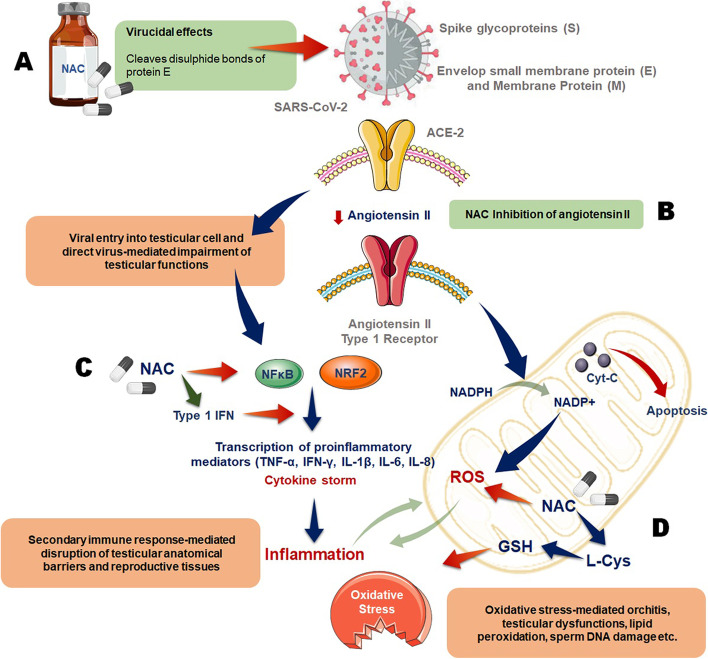Fig. 2.
Possible mechanisms of NAC-mediated protections against male reproductive disruptions caused by SARS-CoV-2 infection. A Due to presence of its free sulfhydryl group, NAC reduces the sulfide bonds in the cross-linked glycoprotein matrix in mucus thus reduced mucus viscosity and showing a mucolytic property. B NAC may reduce the binding of angiotensin II with its type 1 receptor. NAC may block imprudent synthesis of angiotensin II which cannot be converted to angiotensin 1-7 by the activation of ACE2 thus lowering the possibility and/or severity of the infection. C NAC may lead to amplification of signal cascades triggered by toll-like receptor 7 and mitochondrial antiviral signal protein in restoration of SARS-CoV-2-mediated type-I interferon (IFN) production and inhibition of NFkβ (nuclear factor kappa B) mediated upregulation of pro-inflammatory genes. D Being a potent antioxidant, NAC may exert direct effects on some reactive oxygen species (ROS), whereas it is a precursor of cysteine (an essential substrate for glutathione synthesis) and also regulates the redox state by maintaining the thiol pool

